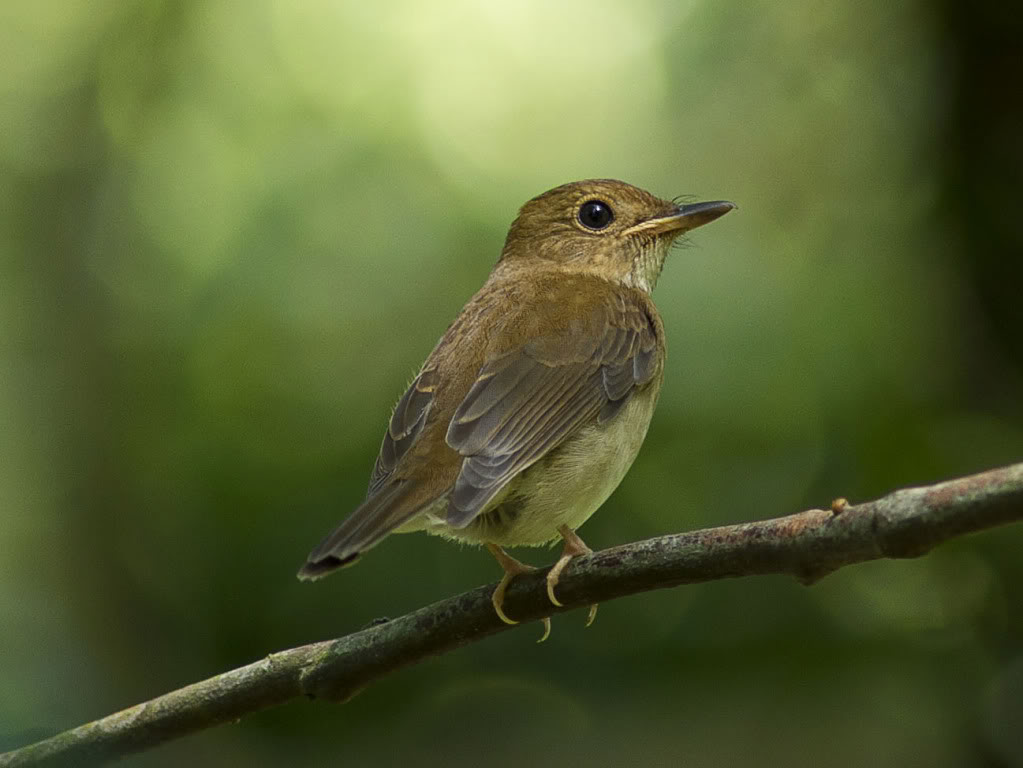
Rhinomyias brunneata
SUBFAMILY
Muscicapinae
TAXONOMY
Rhinomyias brunneata Slater, 1897.
OTHER COMMON NAMES
English: Brown-chested flycatcher, Chinese olive flycatcher;
French: Gobemouche а poitrine brune; German: Weisskehl-
Dschungelschnдpper; Spanish: Papamoscas Selvбtico de Gargantilla
Blanca.
PHYSICAL CHARACTERISTICS
The body length is about 6 in (15 cm). The sexes are colored
similarly, with a brown back, wings, and tail, a brown-buff
breast, white throat, and tan eye-ring.
DISTRIBUTION
A migratory species that breeds in southeastern China and
winters on the Malay Peninsula. It migrates through Thailand
and perhaps the Nicobar Islands, and winters in parts of
Malaysia and Singapore, and possibly parts of the islands of
Borneo and Sumatra.
HABITAT
Breeds and winters in dense stands of bamboo and shrubs
within subtropical, broadleaf, evergreen forest, and mature
second-growth forest. Occurs within an altitudinal range of
2,000–3,900 ft (600–1,200 m).
BEHAVIOR
A migratory species. Pairs of breeding birds defend a territory.
The song consists of a series of piping calls.
FEEDING ECOLOGY AND DIET
Searches from a perch for flying insects in the forest canopy.
REPRODUCTIVE BIOLOGY
Builds a cup-shaped nest in a shallow tree-cavity or at a narrow
branch-fork.
CONSERVATION STATUS
Vulnerable. A rare and declining species because of widespread
loss and fragmentation of its critical habitat. Its critical breeding,
migratory, and wintering habitats must be identified and
protected.
SIGNIFICANCE TO HUMANS
None known, except for the economic benefits of birdwatching.
Other popular Animals
Photo Gallery of - Brown-chested jungle-flycatcher




 Animalia Life
Animalia Life